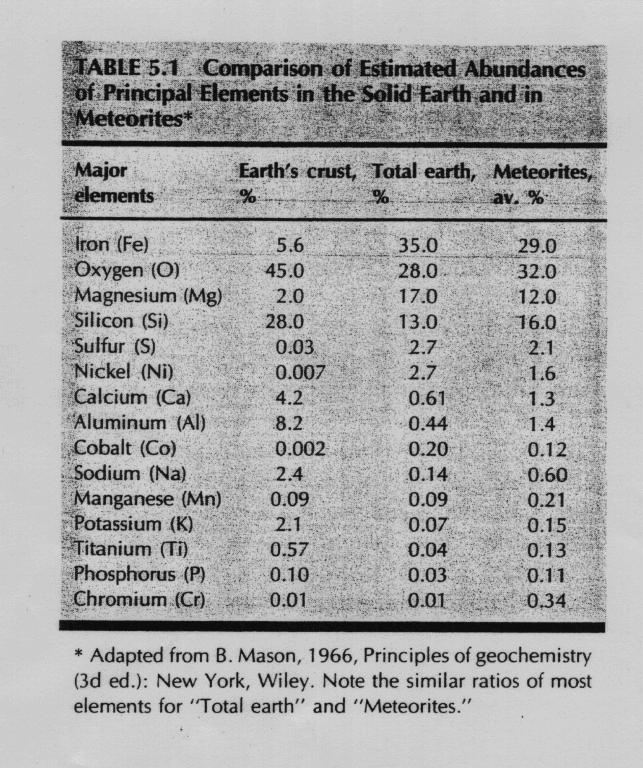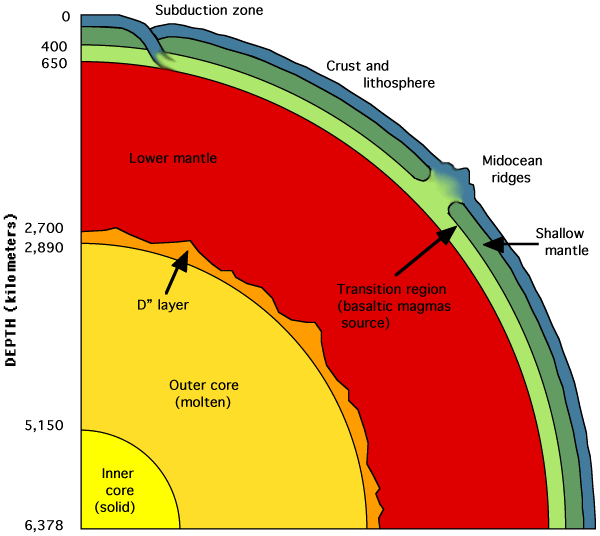
Objectives:
(1) understand current views on the earth's formation in the context of the history of the solar system(2) learn about Earth's early history (4.6 to 4.1 billion years (by) ago) and the process of differentiation.
The creation of the Universe began in the Big Bang
(some 12 - 18 by ago) followed
by the formation of galaxies, gas and dust clouds,
and stars.
Around 4.6 - 5.0 by ago, a cloud of gas and dust in
our vicinity began to contract
(triggered by some outside influence, perhaps a supernova
explosion).
Fig. 11.2 shows this process: contraction with rotation
to form
a central proto-Sun (creating energy by nuclear fusion
of 4 H into 1 He)
and a surrounding disk ("solar nebula").
Planetessimals (city-sized rocks) grew in the disk
and coalesced to eventually
form the planets ("terrestrial" in hot disk close
to sun and "jovian" in cold disk
far from sun).
Earth formed from the accretion of rocks like meteorites
(see comparison of
abundances in table below).

Determine the date of birth by radioactive dating of U238 into Pb206 which gives the age of the Earth, 4.59 by.
The early appearance would have been a hot rocky lump,
with an atmosphere of H2, CH4,
NH3 (which later evolves into N2, O2).
The period from 4.6 to 4.1 by sees the Earth undergo
differentiation
in which heavy elements sink and light elements rise
in the molten interior:
from inside out, the Earth develops a core, mantle,
crust, hydrosphere, and
atmosphere.
Heating due to radioactive decay of U into K and
U into Pb (plus others)
creates a "meltdown" in the interior:
Core - Fe, Ni (heavy)
Mantle - Mg, Si, Fe, O (next heaviest)
Crust - O, H, Si, Al, K, Na
Outgassing from volcanoes forms the atmosphere and
early oceans
(some sedimentary rocks are as old as 4.1 by indicating
oceans were
present then).
